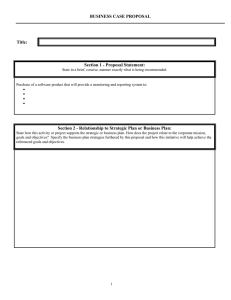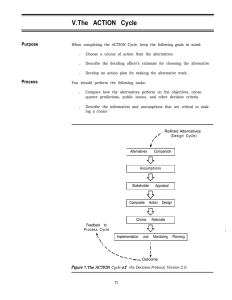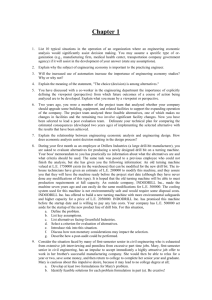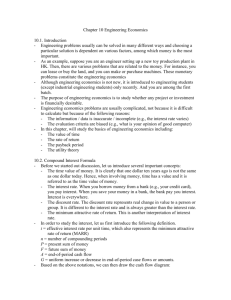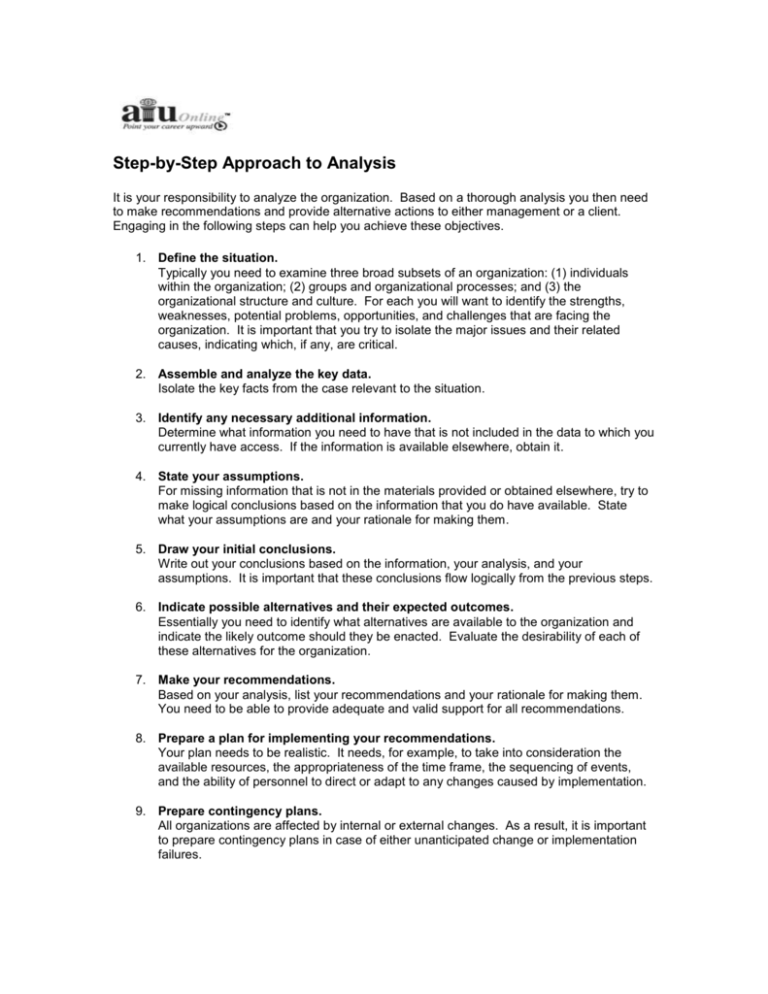
Step-by-Step Approach to Analysis
It is your responsibility to analyze the organization. Based on a thorough analysis you then need
to make recommendations and provide alternative actions to either management or a client.
Engaging in the following steps can help you achieve these objectives.
1. Define the situation.
Typically you need to examine three broad subsets of an organization: (1) individuals
within the organization; (2) groups and organizational processes; and (3) the
organizational structure and culture. For each you will want to identify the strengths,
weaknesses, potential problems, opportunities, and challenges that are facing the
organization. It is important that you try to isolate the major issues and their related
causes, indicating which, if any, are critical.
2. Assemble and analyze the key data.
Isolate the key facts from the case relevant to the situation.
3. Identify any necessary additional information.
Determine what information you need to have that is not included in the data to which you
currently have access. If the information is available elsewhere, obtain it.
4. State your assumptions.
For missing information that is not in the materials provided or obtained elsewhere, try to
make logical conclusions based on the information that you do have available. State
what your assumptions are and your rationale for making them.
5. Draw your initial conclusions.
Write out your conclusions based on the information, your analysis, and your
assumptions. It is important that these conclusions flow logically from the previous steps.
6. Indicate possible alternatives and their expected outcomes.
Essentially you need to identify what alternatives are available to the organization and
indicate the likely outcome should they be enacted. Evaluate the desirability of each of
these alternatives for the organization.
7. Make your recommendations.
Based on your analysis, list your recommendations and your rationale for making them.
You need to be able to provide adequate and valid support for all recommendations.
8. Prepare a plan for implementing your recommendations.
Your plan needs to be realistic. It needs, for example, to take into consideration the
available resources, the appropriateness of the time frame, the sequencing of events,
and the ability of personnel to direct or adapt to any changes caused by implementation.
9. Prepare contingency plans.
All organizations are affected by internal or external changes. As a result, it is important
to prepare contingency plans in case of either unanticipated change or implementation
failures.
These steps can help you organize and adequately prepare for written or oral organizational
analysis reports. Your actual report is based on the work you conduct during this analysis but is
formatted according to the guidelines presented in the document Organizational Analysis.
Analytical steps are adapted from the following source: Digman, L.A. (1999). Strategic management cases, 5th ed.,
p. SM-3. Houston: Dame Publications.
© 2004 AIU Online. All Rights Reserved.







